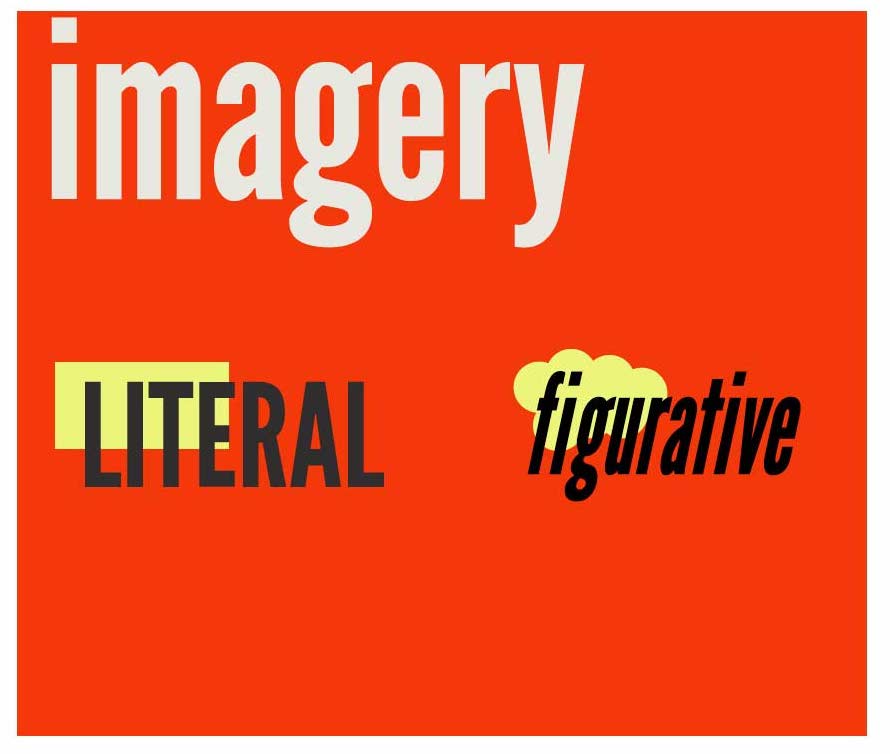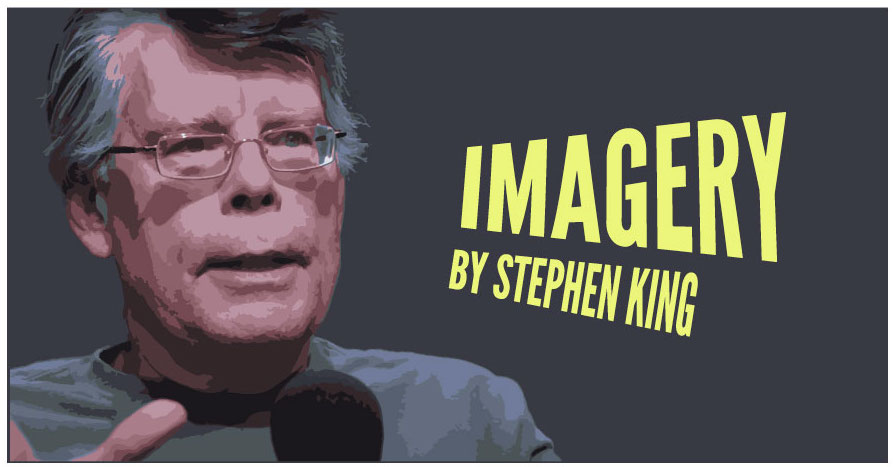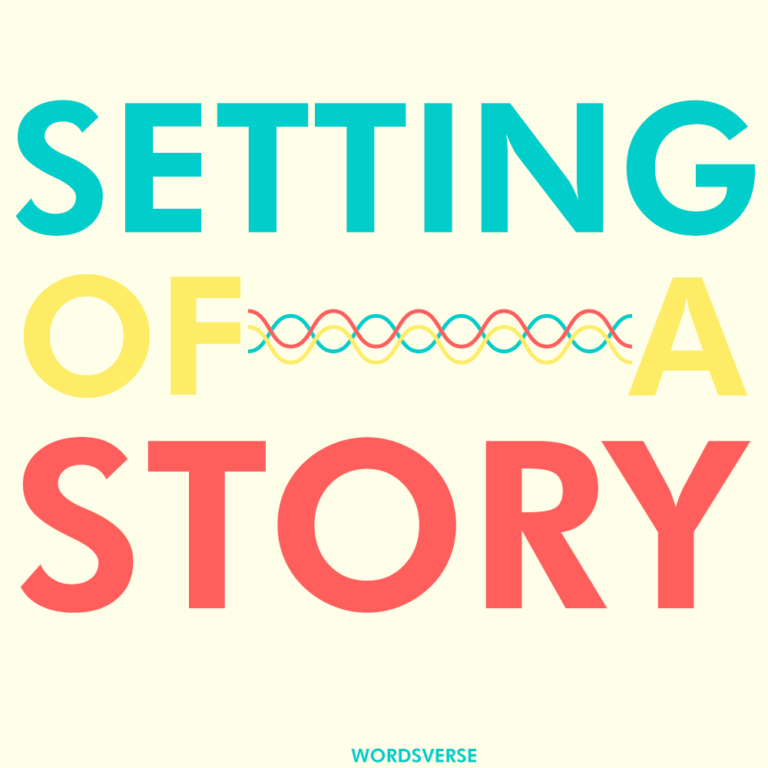Fiction is hard to imagine, harder to write, and hardest to connect with the readers. For beginner writers, the first draft that you write will be unbearable to look at. It would be incoherent, lack depth and the writing would look like a third-grade student wrote it. So to avoid an insipid story, you have to add a lot of elements to your story, like better plot, dialogues, right pacing. This is the detailing of the story. Then there’s the structural editing to make it better.
One element is a bane for some beginner authors; it’s called imagery. Imagery is the spice that can make your story connect better with the readers. But how to use imagery? What does imagery even mean? How about we learn it from a professional writer, who’s an expert in instilling imagery in his work, Stephen King.
From one of his essays called Imagery and the third eye, I’ve written a condensed article about all the useful tips that Stephen King delivers on imagery. Following that are some tips to use imagery and how to improve your perceptive skills to be a better writer. Before we get to the essay’s essence, let’s get a concrete meaning of imagery.
Understanding imagery
An author does not have cameras and post-production teams to put CGI elements or edit the shot the way the director wants to. Writers just have a pen and paper (or a word processor). However this does not put the director or the movie-maker at an advantage. Quite contrary to that, the writer has the advantage.
Since writers have words, they can create a world, a scene, a character however they imagine it to be. Movie-makers can do that, but their imagination is limited by resources and technology. This exceptional power of the authors is given by imagery, the topic of this article. All writers need to do is imagine the world they want to show the readers and then write about it. This article will focus on teaching how to “imagine” this world and then pen it down.
Imagery, in the simplest sense, is writing whatever you see in your imagination about the topic that you are writing on. If I am writing about an amusement park, I imagine some typical things like people having a fun time, rides and shops everywhere, some people screaming as the ride gives them an adrenaline rush. This is basic imagination and we are born with this superb power. The more vividly you try and imagine, the more details emerge.
But what King said about imagery is a different type of imagery. There are two forms of imagery; literal and figurative. Literal means you describe what you see, exactly what you see. Figurative imagery means describing something in all ways but in an exact way. So if I have to describe a red bulb glowing, here’s how I describe it in the two ways:
Literal – The red bulb was glowing
Figurative – The soft glow came from the small setting sun, fixated on the wall.
So if literal imagery is taking a picture with a camera, figurative imagery is painting a picture.

Why do authors use imagery?
Imagery is used by authors to make the readers connect with the story they’re reading. For a novel to be interesting, the readers must be transported into the fiction stage the author has created. If this is not achieved, the book becomes tedious and bland to read. Imagery helps to do just that.
Writing a story is like creating a sketch. The outline of the story is the rough sketch and as you start adding the details, the story starts taking form. In imagery, a good amount of details is necessary to make it interesting for the readers. Too simple and it becomes a vague idea, too much and it is mentally taxing for the readers.
Imagery affects the reader in one crucial way. It makes them use their imagination to see what the author wants them to see. Notice something unusual in the line above? If the author has already described the scene vividly, how come then the readers imagine something different? This is what Stephen King tells us about imagery.
Stephen King on imagery
King’s essay is a long one and if you want to get better at writing, you should check it out. King starts his essay by stating an accusation that has been hurled at him by critics; he writes his novels for movie adaptations.
While it’s true that most of his literary works have been turned into major motion pictures, he justifies this by saying he does not write for the movie, he writes novels that are easy to adapt on the screen.
“I’m suggesting that my novels have sold to the movies not because they were written for the movies, but simply because they contain elements of the vivid image that appeal to those who make films”
-Stephen King, Author.
The use of imagery in King’s books is lucid, easy to take in, and vivid. He is capable of creating scenes and tones so smoothly that the readers do not feel the “strain of reading”. It feels that the world is being created so as you give it just one read.
The chilly hotel with its enormous size and only three people inside this maze creates a sense of hollowness. To add to that, the hotel is situated on a hill that is cut off from the rest of the world when the snow engulfs. There is a reason for this imagery. It is to create a sense of helplessness, isolation, the coldness (which is a major theme in the book The Shining).
So Stephen King does not write for movies, but what he writes has vivid imagery. This means that it is easier for the readers and the movie makers to visualize the novel and connect with it. And once a novel connects with the reader, it is a success. But why does King uses imagery?
Use of imagery in vocal storytelling
King gives an example of a caveman telling a story and capturing the imagination of the listeners. He says that storytelling is as old as human speech. The one who can captivate the audience wins their hearts. But how can someone use the imagery in vocal storytelling?
If I tell you a story about visiting a dark alley and then fighting a bunch of criminals with nothing but my bare hands. You won’t be that interested in it. And if this story is delivered with a non-changing facial expression and stiff posture, you’d either doze off or just leave, (or tell me to shut up).
But if I tell you “While I walked towards my home in the middle of the night, I heard footsteps in a dark alley. There were no streetlights and the only light came from a bright silvery moon. I proceeded carefully, landing each footstep like a feather on a mattress.” Along with it, I add hand gestures, facial expression, you’d agree that it would make a much better storytelling method. This is why imagery is needed.

How to use imagery, according to Stephen King.
Stephen King gives great advice on using imagery. Here’s an excerpt from the novel Salem’s Lot which describes how a house looks. The idea is to make the house look scary and uninviting.
“The house itself looked toward town. It was huge and rambling and sagging, its windows haphazardly boarded shut, giving it that sinister look of all old houses that have been empty for a long time.
The paint had been weathered away, giving the house a uniform gray look. Windstorms had ripped many of the shingles off, and a heavy snowfall had punched in the west corner of the main roof, giving it a thumped hunched look. A tattered no trespassing sign was nailed to the right-hand newel post”
Notice how the literal imagery is not used here, not even a single time. King never outright says “the house was scary”, but he uses the description of the house that makes the readers imagine for themselves that the house is scary. Telling the house is scary would not work, because what kind of scary is it?
A scary house is an abstract idea that has no concrete footing in the readers’ minds. There is nothing in that simple sentence that would let the readers imagine. An image, on the other hand, tells the readers what to imagine and where to imagine. It gives a concrete structure to work with and this makes the readers live the novel.
What to write for imagery?
To give an image to the readers, always give the right amount of information. Never too little, never too much. How to know which detail you want to keep and which to throw out is by imagining.
Imagine the scene that you want to describe, be it a gathering, a fight scene, a romantic walk, an argument, anything. Imagine it well. After you have created the mental image, look at the little details that catch your attention, the details that you can see vividly. These are the details you should keep in the novel.
As an author, you tell the readers what it is, but leave enough space for them to add the details themselves. If a say “a red apple cut unevenly”, I don’t need to describe the shape at which it was cut. You probably imagined those details yourself. This is how you make the imagery right.
The problem with too much detail is that it causes imagination fatigue. When you describe something in a story, the readers follow your command. You tell them it is a red apple, they imagine that. But if you go on describing things and nothing for them to imagine, they’ll get tired, eventually disconnecting with the book.
A quote by Stephen King from the essay would make the point easier to understand.
“If I can say anything important to writers who are still learning the craft of fiction, it’s this: imagery does not occur on the writer’s page; it occurs in the reader’s mind”
Stephen King
You give the readers the brick and mortar to build the house, in whichever way their imaginations let them build it. Don’t build the house for them.

Improving your imagery skills
It is always easier said than done. Saying what to do to make your imagery flow and connect the readers is very easy, but very tough to do. One common reason why many writers cannot describe the scene well is that they don’t imagine it well.
“Sometimes would-be writers will say to me, “I know what I mean but I don’t know how to describe it.” What this usually means is, “I can’t describe it because I can’t quite see it.”
Stephen King
To write better, first you must imagine it vividly. Take your time and relax. Let the words fill your mind and imagination create the world you want to describe.
Tips for writing better imagery
There are few ways you can make your imagery skills better. All it takes is a little bit of practice. Follow these tips and see the results for yourself.
- Live in the imagination that you have to get to know it better. You cannot describe something that you don’t know well. Try feeling most of the things your imagination shows you
- To get started with using imagery well, first look around yourself. Whatever you see, try describing that scene with some additional elements. The better you get at describing things, the easier it will be for you to do that with your imagination. You can use the Prisoner’s constraint to write descriptions better.
- Leave all the details that you cannot see without straining your mind in your imagination. A good example is ambiguous things. If you image a bus, describe the size and colors or some distinct feature of it. Don’t start describing the shape of its bonnet or the size of the bumper.
- Before imagining, it is recommended that you lean back and relax your mind. Your mind must be free of all other tasks to roam freely in the realm of imagination.
- For writing non-fiction, see the structure of the content you are writing. If everything firs well or not. If any part of the content becomes too lacking or too detailed.
- Read, read, read. The more you read the better writer you become. Read a lot of fiction if you want to be better at writing at it. Here’s why reading is so good for you.
Follow these tips and a lot of practice. Remember imagination is important to be a better storyteller, but at the same time, filtering what you see in the imagination and what is necessary is a skill. So relax and keep writing.







